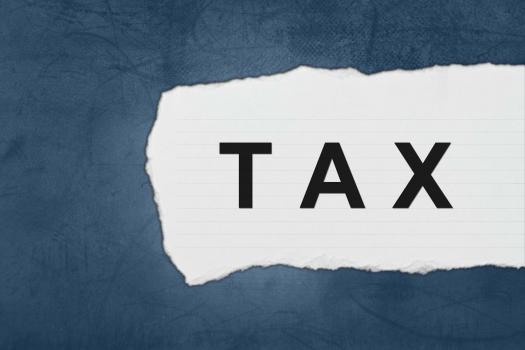Rtrp - IRS Registered Tax Return Preparer Test
-
When it comes to earned income credit, a qualifying child is one who does what?
-
Meets the relationship requirements
-
Fills a joint return
-
The child is temporarily-disabled and below 18.
-
The child has stayed in the United States for at least 12 months.
-
If you are a tax return preparer, then it is mandatory that you take the registered tax return preparer’s test. It is typically administered in a computer-based format, and you will be required to keep paying the fee if you make it again. So check the questions we have for you below, to help you prepare for your RTRP - IRS Registered Tax Return Preparer Test.

Quiz Preview
- 2.
Estimated tax is due for which taxpayers? Those who...
-
Owe additional tax.
-
Has no tax liability.
-
Have had a tax for at least 12 months.
-
Lived in the US for a year.
Correct Answer
A. Owe additional tax.Explanation
The correct answer is "owe additional tax." This means that taxpayers who have a tax liability that is not fully covered by withholding or estimated tax payments are required to make estimated tax payments. These taxpayers are responsible for calculating and paying the amount of tax they owe throughout the year, rather than waiting until the end of the year to pay it all at once.Rate this question:
-
- 3.
If a taxpayer wants to adjust his/her income on Form 1040, which of the following can the adjustment be made for?
-
Medical expenses
-
Before year federal income tax paid
-
Deductible part of self-employment tax form schedule SE
-
Tier 1 railroad retirement tax and excess social security
Correct Answer
A. Deductible part of self-employment tax form schedule SEExplanation
The adjustment can be made for the deductible part of self-employment tax form schedule SE. This means that a taxpayer can deduct a portion of the self-employment tax they paid from their income on Form 1040. This adjustment helps reduce the taxpayer's taxable income and ultimately their tax liability.Rate this question:
-
- 4.
Which is one of AMT's triggers?
-
Long-term capital gains
-
Short-term capital gains
-
Interactive gains
-
Interstitial gains
Correct Answer
A. Long-term capital gainsExplanation
Long-term capital gains are one of the triggers for the Alternative Minimum Tax (AMT). The AMT is a parallel tax system in the United States that ensures individuals with high income and certain deductions pay a minimum amount of tax. When a taxpayer has long-term capital gains, which are profits from the sale of assets held for more than one year, it can increase their overall income and potentially trigger the AMT. This is because the AMT calculation adds back certain deductions and exemptions, including the preferential tax treatment given to long-term capital gains.Rate this question:
-
- 5.
Retirement savings is also known as which of the following?
-
Savings contribution
-
Saver's credit
-
Joint savings
-
Maximum credit
Correct Answer
A. Saver's creditExplanation
The correct answer is "Saver's credit." Retirement savings is commonly referred to as the Saver's credit. This credit is a tax incentive provided by the government to encourage individuals to save for retirement. It allows eligible taxpayers to claim a credit on their tax return based on the amount of money they contribute to qualified retirement savings plans, such as IRAs or 401(k)s. The Saver's credit is designed to help lower-income individuals and families save for retirement and reduce their overall tax liability.Rate this question:
-
- 6.
How true is this statement? "Taxpayers must be 65 years or older to claim the saver's credit."
-
Always true
-
True, but not always
-
Completely false
-
Depends on the saver's credit
Correct Answer
A. Completely falseExplanation
The statement "Taxpayers must be 65 years or older to claim the saver's credit" is completely false. The age requirement for claiming the saver's credit is not related to being 65 years or older. The eligibility for this credit depends on the taxpayer's income, filing status, and contribution to a retirement savings account. Age is not a determining factor for claiming the saver's credit.Rate this question:
-
- 7.
Which of the following does self-employment tax apply to?
-
Individuals who report only dividend and interest income
-
Contractors that submit reports of less than $50000 for gross receipts
-
Church employee income of more than $100
-
None of the options
Correct Answer
A. Church employee income of more than $100Explanation
Self-employment tax applies to individuals who report only dividend and interest income, contractors that submit reports of less than $50000 for gross receipts, and church employee income of more than $100.Rate this question:
-
- 8.
What part of the AMT (alternative minimum tax-individual) charts cover medical and dental expenses?
-
Exclusion
-
Deferral
-
Both A and B
-
Neither A nor B
Correct Answer
A. ExclusionExplanation
The correct answer is "Exclusion." This means that medical and dental expenses are excluded from the calculation of alternative minimum tax for individuals. In other words, these expenses are not considered when determining if an individual owes alternative minimum tax.Rate this question:
-
- 9.
Which of the following is the maximum mortgage deduction for a taxpayer who paid $4000 in mortgage interest on a primary residence, $2000 in loan intense for a recreation vehicle and other basic needs, and $2000 mortgage interest on a vacation home?
-
$5000
-
$4000
-
$6000
-
$6500
Correct Answer
A. $6000Explanation
In the United States, taxpayers can generally deduct mortgage interest paid on their primary residence and one additional residence (such as a vacation home), subject to certain limitations. As of my last update in January 2022, the maximum mortgage interest deduction for a taxpayer is limited to interest paid on up to $750,000 of qualified residence loans if filing as married filing jointly, or $375,000 if filing as married filing separately or single.
Given the information provided:
$4000 in mortgage interest on a primary residence
$2000 in mortgage interest on a vacation home
The total deductible mortgage interest would be $4000 (primary residence) + $2000 (vacation home) = $6000.
Therefore, the maximum mortgage deduction for the taxpayer in this scenario would be $6000.Rate this question:
-
- 10.
Which of the following is not an applicable adjustment to gross income?
-
Tuition
-
Alimony fee
-
Groceries
-
Self-employment tax
Correct Answer
A. GroceriesExplanation
Groceries would not typically be an applicable adjustment to gross income. Adjustments to gross income, also known as "above-the-line deductions," are expenses that can be deducted from your total gross income to arrive at your adjusted gross income (AGI).
The other options listed—tuition, alimony fee, and self-employment tax—are all potential adjustments to gross income:
Tuition: Certain educational expenses, such as tuition and fees, may be deductible if you meet certain criteria, such as the Lifetime Learning Credit or the Tuition and Fees Deduction.
Alimony fee: Alimony payments made to a former spouse can generally be deducted as an adjustment to gross income, subject to specific IRS rules and requirements.
Self-employment tax: Self-employed individuals can deduct the employer-equivalent portion of their self-employment tax, which represents the Social Security and Medicare taxes paid by self-employed individuals. This deduction reduces the individual's adjusted gross income.Rate this question:
-
Quiz Review Timeline (Updated): May 5, 2024 +
Our quizzes are rigorously reviewed, monitored and continuously updated by our expert board to maintain accuracy, relevance, and timeliness.
-
Current Version
-
May 05, 2024Quiz Edited by
ProProfs Editorial Team -
Oct 25, 2018Quiz Created by
AdewumiKoju
Want To Pass The BCBA Exam? Take This Mock Test
A Board Certified Behavior Analyst (BCBA) is a person with a certification in applied behavior analysis. BCBAs receive this certification through the Behavior Analyst...
Questions:
46 |
Attempts:
2750 |
Last updated:
Mar 15, 2024
|
Certified Information Privacy Manager (C.I.P.M.) Exam Prep Test
Prepare for the Certified Information Privacy Manager (C.I.P.M.) exam with this targeted test. Assess your understanding of data protection laws like GDPR, techniques like...
Questions:
328 |
Attempts:
183 |
Last updated:
Mar 19, 2023
|
|
CIPP/US Certification Exam Prep Test
Prepare for the CIPP\/US Certification Exam with this focused prep test. Assess your understanding of U.S. privacy laws, data protection, and legal compliance with key concepts...
Questions:
266 |
Attempts:
163 |
Last updated:
May 08, 2024
|
PPSC Post Certification Exam
The PPSC Post Certification Exam assesses knowledge in dynamic warm-up sequences, foam rolling techniques, and stretching protocols, crucial for effective pre-training routines....
Questions:
24 |
Attempts:
1066 |
Last updated:
Mar 22, 2023
|
Lean Six Sigma Yellow Belt Certification Exam
This exam tests knowledge of Lean Six Sigma at the Yellow Belt level, focusing on process improvement, efficiency, and quality standards.
Questions:
12 |
Attempts:
126 |
Last updated:
Mar 17, 2023
|
Adobe Campaign Certification Preparation
This quiz prepares for Adobe Campaign Certification, covering scheduling, query activities, deduplication, campaign execution, sorting, and mandatory properties.
Questions:
44 |
Attempts:
225 |
Last updated:
Mar 20, 2023
|
 Back to top
Back to top
















